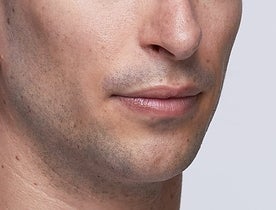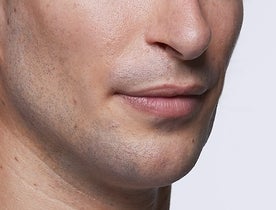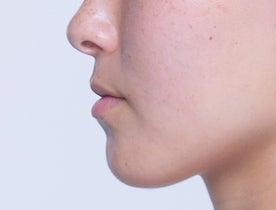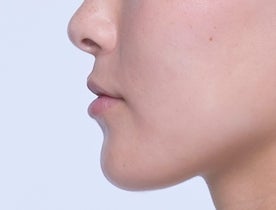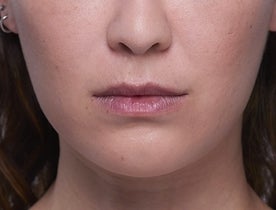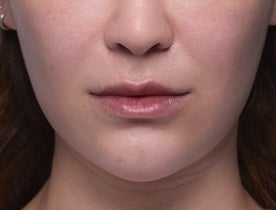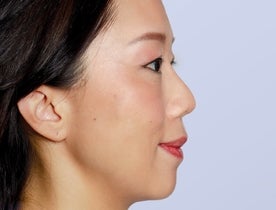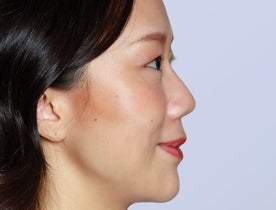Enhance your jawline and improve chin definition with an
individualized treatment plan from a licensed professional.
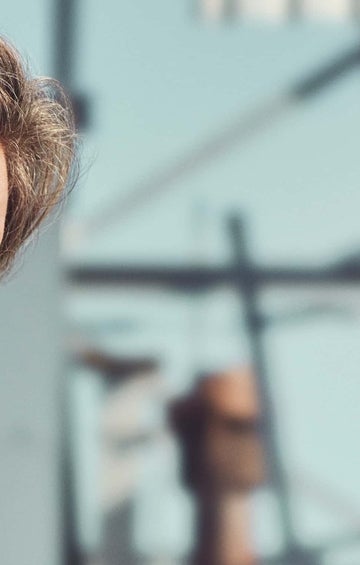

Jawline fillers
The shape of the lower face is all about bone structure, which varies from person to person and can change with facial aging and bone resorption.1 Jawline fillers from Restylane® can help restore the shape of a sagging jawline.2-9 Complemented with chin fillers they can also balance your face seen in profile.10
What are jawline fillers from Restylane®?
Jawline fillers from Restylane® are hyaluronic acid based fillers that can provide structure to a sagging jawline or enhance the shape of the jawline.2-9 They are often used together with chin fillers to balance facial profile.10 Only Restylane® uses technologies that are designed to mimic diverse facial structures and skin layers to provide optimal and natural-looking results.4,11,12
Types of jawline fillers and chin fillers

Restylane® LYFT™
FOR PROJECTION AND STRUCTURE
Compensate for loss of jawline definition or achieve a more structured look with Restylane® LYFT™. With its optimal properties, such as a very high firmness, it will bring structure to your jawline and chin and balance your profile.2–9,13
With Restylane® LYFT™ you can keep your new look for a long time. It creates durable and natural-looking results that last up to 24 months with one retreatment.9,14,15

said their results looked natural9
would recommend Restylane® LYFT™ to a friend15

Restylane® DEFYNE™
FOR DEFINITION AND MOVEMENT
Enhance the definition of your chin and the area around your mouth.10 Restylane® DEFYNE™ is designed to treat dynamic facial areas, such as the chin and marionette lines.5,6,16 It provides enough firmness to define your chin10 but is also flexible, so you look natural when you smile and laugh.17-19
Restylane® DEFYNE™ is a long-lasting dermal filler that provides chin enhancement for up to one year.10

said the appearance of their chin had improved10
were satisfied with the style of their chin10


Frequently asked questions
How long do jawline fillers last?
Restylane® LYFT™ has been shown to provide long-lasting results that last up to 24 months with one retreatment.9,14,15 Restylane® DEFYNE™ lasts up to one year.10
Will jawline fillers hurt?
Most Restylane® fillers contain a local anesthetic, lidocaine, for a more comfortable treatment experience.16,13
Jawline filler aftercare - what should I do?
Your healthcare practitioner will give you specific instructions for aftercare that you should follow carefully. Jawline filler treatments are minimally invasive and require no downtime, but side effects such as swelling, bruising, redness, itching and pain may occur.
Keep the area clean, free of makeup and avoid touching or massaging the treated area. After your treatment, avoid exposing the treated area to heat (sunbathing, saunas, steam baths, etc) until any signs of local inflammation have disappeared. Your healthcare practitioner will inform you about potential side effects.
* Restylane® LYFT™ is the firmest (highest G’) NASHA® gel and has a higher G’ (elastic modulus) than HA fillers in the Juvéderm, Belotero, and Teosyal product ranges.2–4
1. Coleman S R et al. Aesthetic Surgery Journal vol. 26,1S (2006): S4-9. 2. Galderma. Data on file. MA-43049. xStrain and G’ (Global). 3. Galderma. Data on file. MA-34483. xStrain and G’ (US). 4. Öhrlund A et al. J Drugs Dermatol. 2024;23(1):1332–6. 5. Rogerio V et al. J Stomatol Oral Maxillofac Surg. 2022;123(4):440–7. 6. Di Gregorio C et al. Clin Cosmet Investig Dermatol. 2022;15:681–90.
7. Nikolis A et al. Aesthet Surg J Open Forum. 2020;2(1):ojaa005. 8. Lundgren B et al. J Drugs Dermatol. 2018;17(9):982–6. 9. Nikolis A et al. Poster presentation: The CHEEKY study: effectiveness of cheek treatment with hyaluronic acid fillers HAVOL and HALYF. Presented at: AMWC, Monte Carlo, Monaco.2022. 10. Marcus K et al. Plast Reconstr Surg. 2022 Dec; 150(6): 1240–1248. 11. Galderma DOF. MA-56724 X-strain and G' including Shaype. 12. Nikolis A, et al. J Drugs Dermatol. 2024;23(4):255–61. 13. Restylane® LYFT™ IFU (EU). 14. Huang SH, Tsai TF. J Drugs Dermatol. 2020;19(9):836–42. 15. Andriopoulos B et al. Poster presentation: Facial augmentation with hyaluronic acid fillers in an Asian population. Presented at: AMWC, Monte Carlo, Monaco. 2019. 16. Restylane® DEFYNE™ IFU (EU). 17. Percec I et al. Plast Reconstr Surg. 2020;145:295e–305e. 18. Philipp-Dormston WG et al. Dermatol Surg. 2018;44(6):826–32. 19. Solish N et al. J Cosmet Dermatol. 2019;18(3):738–46.
Always consult a healthcare professional for individualized treatment recommendations and to discuss important safety information and risks associated with the use of the products.


